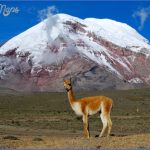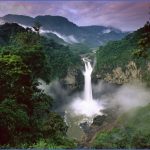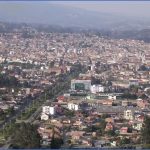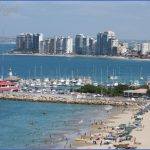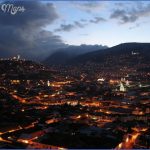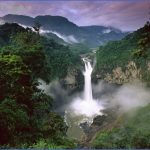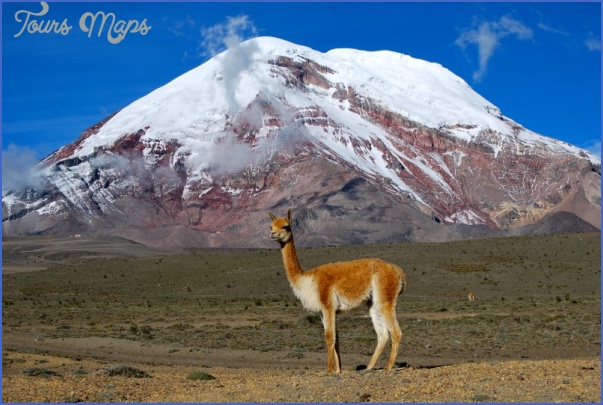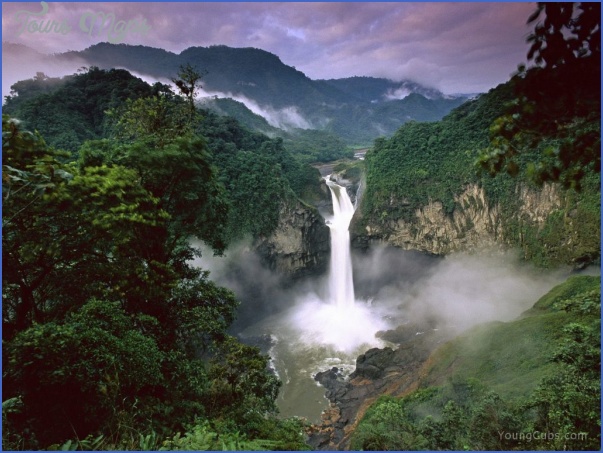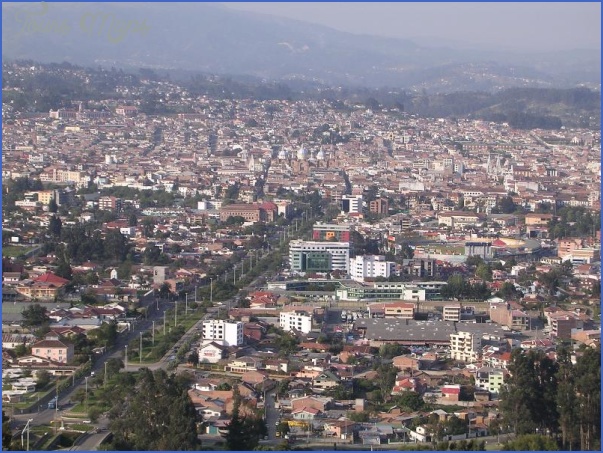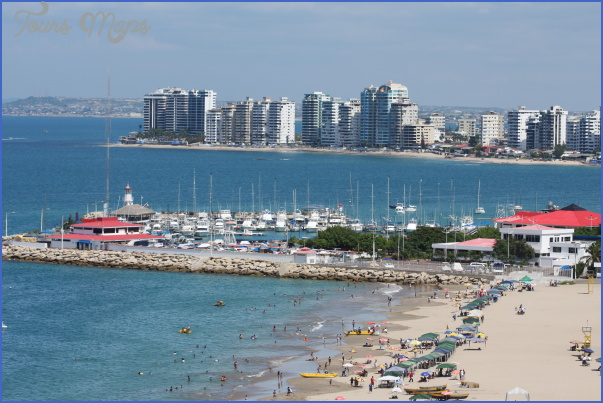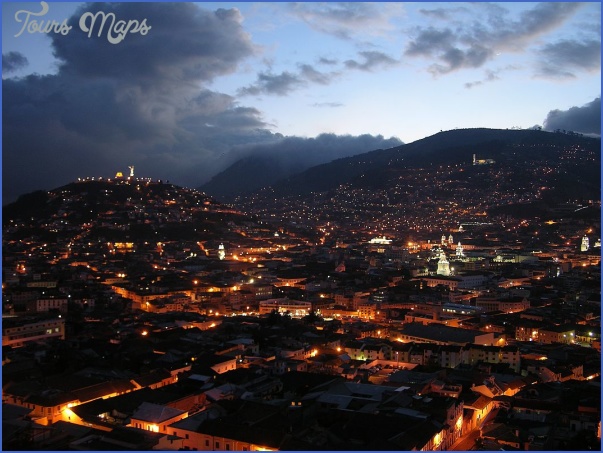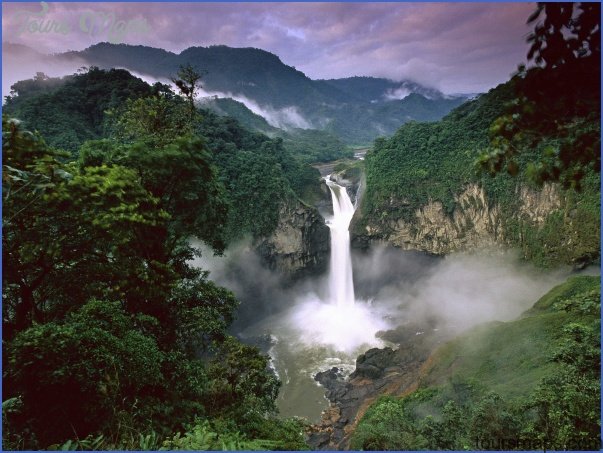Air departures from the United States to Ecuador totaled only 40,527 in 1981. Still, the country is worth reviewing for students of travel because of the beauty of the capital city, Quito, and because of the natural history packaged in the Galapagos Islands (owned by Ecuador). Quito, at 9,250 feet, takes some altitude adaptation for the arriving traveler. Though a globe-topped monument marking the equator is only fifteen miles north of Quito, the altitude gives the city springlike days and crisp, cool nights. Quito is easily accessible by air from New York City, Miami, and Los Angeles.
Ecuador’s port city and largest town, Guayaquil, lies on the Pacific, undistinguished except for being the world’s biggest shipper of bananas.
Visitors to Quito never forget the rugged beauty of the surrounding mountains. The white-walled, green-domed cathedral, La Compania, is a church famous for its glittering interior coated with gold leaf. The archeological Museum of Banco Central is reported as having one of the finest archeological collections in the Americas. Nearly all tourists take trips to market towns a few hours by car where surprisingly beautiful woolen goods including woven tapestries, clothing, and rugs can be had at incredibly low prices. (Bartering is expected.)
For the naturalist, the dream trip is to the Galapagos Islands, 656 miles off Ecuador’s coast. The flora and fauna of the islands have fascinated scientists ever since Charles Darwin arrived in 1835 and substantially documented his theory of evolution by observing the numerous species of animals that had developed unique characteristics, isolated from the rest of the world. Biologists report that 37 percent of the shore fish and 96 percent of the reptiles are found nowhere else. Forty-seven percent of the plants are unique to the Galapagos. The islands are easily reached by air via either Quito or Guayaquil. Island cruises are also available including an eleven-day round trip on the Ecuadorian Navy’s passenger-supply ship that takes civilians as paying passengers.
For the intrepid, there are the trips down from the mountains into the Amazon region. The Jivaro Indians have an unusual tourist trinket for sale shrunken heads. The guideblogs tell us that most are imitation, made from goat hides, and can be purchased for about $3. To the chagrin of the shrunken head connoisseur, visitors are no longer used as raw material for the heads.
As in most Latin American countries, don’t drink the tap water. Ecuadoran beer has a formidable reputation as in a number of other South American countries where the Germans long ago set up breweries. For the fruit juice lover there is naranjilla, a flavor cross between peach and citrus. The local aguardiente, sugar cane alcohol, is used in paico, made of two parts fresh lemon, one part aguardiente. Llapengachos is a mashed potato/cheese specialty. The squeamish may not go for the national delicacy, baked guinea pig.
At this time so few North Americans are traveling to the other South American countries that they will not be discussed.
ECUADOR Photo Gallery
Maybe You Like Them Too
- Explore Doncaster, United Kingdom with this detailed map
- Explore Arroyito, Argentina with this Detailed Map
- Explore Belin, Romania with this detailed map
- Explore Almudévar, Spain with this detailed map
- Explore Aguarón, Spain with this detailed map

